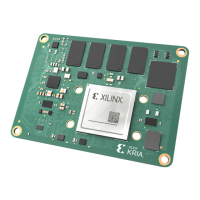Proles should be established for all new board designs using thermocouples placed at mulple
locaons on the component. In addion, if there is a mixture of devices on the board, then the
prole should be checked at various board locaons to ensure that the minimum reow
temperature is reached on the larger components, and at the same me the temperature does
not exceed the threshold that might damage the smaller, heat sensive components.
The following tables and gures provide the recommended guidelines for Pb-free solder PCB
assembly reow. In general, a gradual-linear ramp into a spike is proven, by various sources, to be
the opmal reow prole for Pb-free solder. This prole results in a beer weng yield and less
thermal shock than the convenonal ramp-soak-spike prole. It is a known fact that SnAgCu
(SAC) alloy reaches its full liquidus at a temperature of 235°C. In the reow proling, the coldest
solder joints need to be idened and to ensure that they reach a minimum peak temperature of
235°C for at least 10 seconds. Reowing at high-peak temperatures of 260°C or above can
damage the heat sensive components and cause board warpage. Refer to the latest IPC/JEDEC
J-STD-020 standard for allowable peak temperature on the components. The allowable
component peak temperature is determined by the component size. The following table lists the
reow soldering temperature prole informaon. In any case, use as low of a peak temperature
reow prole as possible. The following image shows an example of the reow temperature
prole.
Table 16: Recommended Reflow Soldering Temperature Profile
Profile Feature Convection, IR/Convection
Preheat ramp-up rate 30°–150°C 3°C/s maximum
Preheat temperature soak time 150°–200°C 60–120 seconds
Temperature maintained above 217°C 60–120 seconds (60–90 seconds typical)
Time within 5°C of actual peak temperature 30 seconds maximum
Peak temperature (lead/ball) 235°C–245°C typical (depends on solder paste, board size,
component mixture)
Ramp-down rate 4°C/s maximum
Figure 10: Recommended Reflow Soldering Temperature Profile
Chapter 3: Mechanical Design Considerations
UG1091 (v1.0) April 20, 2021 www.xilinx.com
Carrier Card Design for Kria SOM 48

